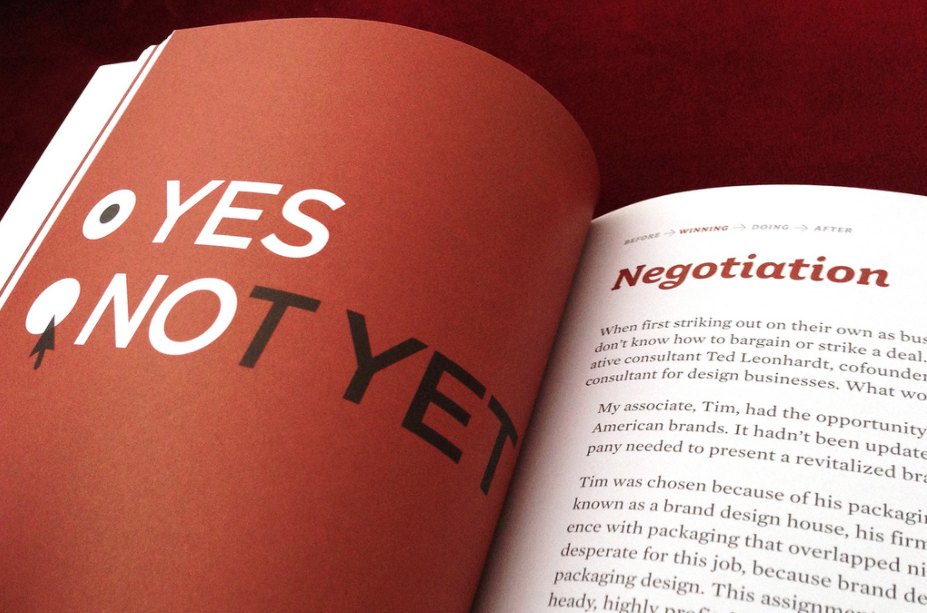Women often tell me that they are afraid of negotiation, that they either just do not know how to do it to get what they want or that they do not have confidence that they will be ready enough for any negotiation.
Whether it is a salary negotiation, bidding on a job, or solving a problem on a job site, you can have an effective negotiation and get the results you seek following some logical and well-planned steps.
The very first step is to start in your own head. The voices in our heads often dissuade us of our ability to successfully negotiate. Just say "no" to those voices!
Negotiation does not need to be equated with conflict. In fact, starting with thinking about the issue as a problem to solve and that your negotiation partner is part of your process in reaching a solution will help reorient your view. Because women are natural collaborators, if we approach our negotiations as getting a deal done rather than getting a "win," we are more likely to enter the process with confidence. And confidence will get you halfway to your goal!
Your mindset—how you look at the world and your attitudes that influence how you interpret situations—plays a key role in how you negotiate. Often our mindset in a negotiation is that we are in opposition to our negotiation partner. In many situations, your negotiation partner may hold an opposing view or position. However, if you start with the mindset that your "opponent" is instead your "partner" in reaching your goal, your entire mindset and all of your resulting actions will change.
Instead of, "I can't believe they won't give me a raise," think, "I can explain to you why a raise will be beneficial not only for me but also for the firm." You can see how your discussion will automatically change.
In addition, when you enter into a discussion with this collaborative mindset , you tap into your natural tendency to find effective solutions and carry an inherent amount of self confidence that will make others want to agree with you.
In relationships, whether they are person or business relationships, no one really wants conflict. If your mindset is such that you are seeking a collaborative solution, others will naturally want to join you on this journey.
Now that your mindset is attuned, we will discuss in my negotiation blog some practical steps to prepare for your negotiation. If you have any comments or questions, please post them and start a dialogue.
Related Stories
| Jun 10, 2014
Gaudi’s famed cathedral on ice: Dutch students to construct 132-foot ice replica of Sagrada Familia
"Sagrada Familia in Ice" will be built with a mixture of wooden fibers and plain ice that is three times stronger than ice.
| Jun 10, 2014
Built-in balcony: New skylight windows can fold out to create a patio
Roof window manufacturer Fakro offers a skylight window system that quickly converts into an open-air balcony.
| Jun 10, 2014
New York's first-ever public housing for visually-impaired begins upgrade
Selis Manor is the first government-funded residence for the vision-impaired and disabled in New York City. MAP’s design eases crowding, increases security, and separates residents and visitors.
| Jun 9, 2014
6 design strategies for integrating living and learning on campus
Higher education is rapidly evolving. As we use planning and design to help our clients navigate major shifts in culture, technology, and funding, it is essential to focus on strategies that help foster an education that is relevant after graduation. One way to promote relevance is to strengthen the bond between academic disciplines and the campus residential life experience.
| Jun 9, 2014
Green Building Initiative launches Green Globes for Sustainable Interiors program
The new program focuses exclusively on the sustainable design and construction of interior spaces in nonresidential buildings and can be pursued by both building owners and individual lessees of commercial spaces.
| Jun 9, 2014
10 projects named 2014 AIA Small Project Award winners
Yale's funky new Ground café and a pavilion made from 53,780 recycled plastic bottles are among the nation's best new small projects.
| Jun 9, 2014
Eli Broad museum files $19.8 million lawsuit over delays
The museum, meant to hold Eli and Edythe Borad's collection of contemporary art, is suing the German company Seele for what the museum describes as delays in the creation of building blocks for its façade.
| Jun 8, 2014
What’s the word of the day? It’s all about ‘resiliency’
Just for the sake of argument, let’s put aside the rhetoric about climate change—whether it’s actually happening, whether it’s a result of manmade activity—and agree that we are experiencing some pretty dramatic weather events that are having huge impacts on populations here in the U.S. and worldwide.
Smart Buildings | Jun 8, 2014
Big Data: How one city took control of its facility assets with data
Over the past few years, Buffalo has developed a cutting-edge facility management program to ensure it's utilizing its facilities and operations as efficiently, effectively, and sustainably as possible.
| Jun 6, 2014
Must see: Can a floating city offset urban population growth in China?
AT Design Office has proposed a design for a floating city to offset increasing urban populations in China. To create the new city, a 10-square kilometer island would be made out of prefab blocks.
















